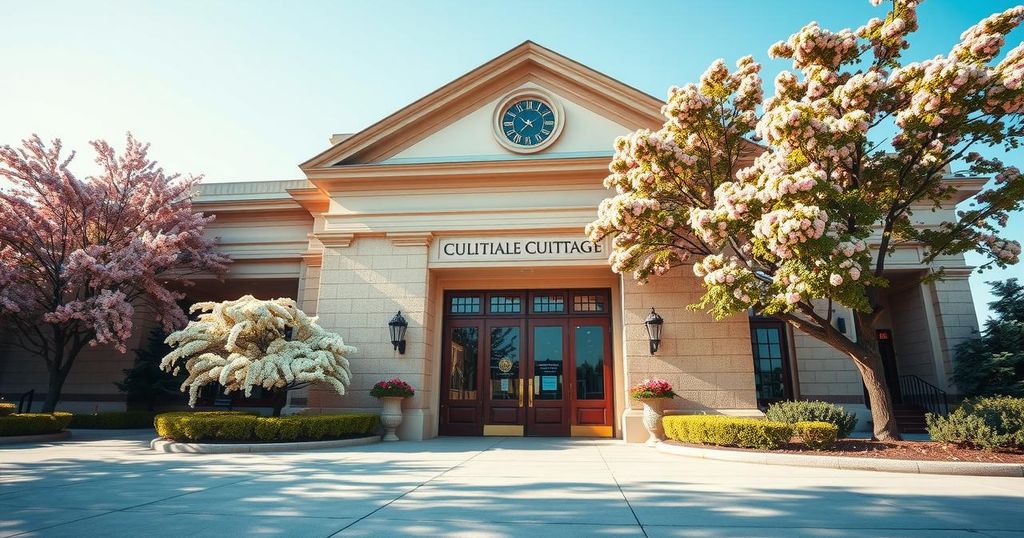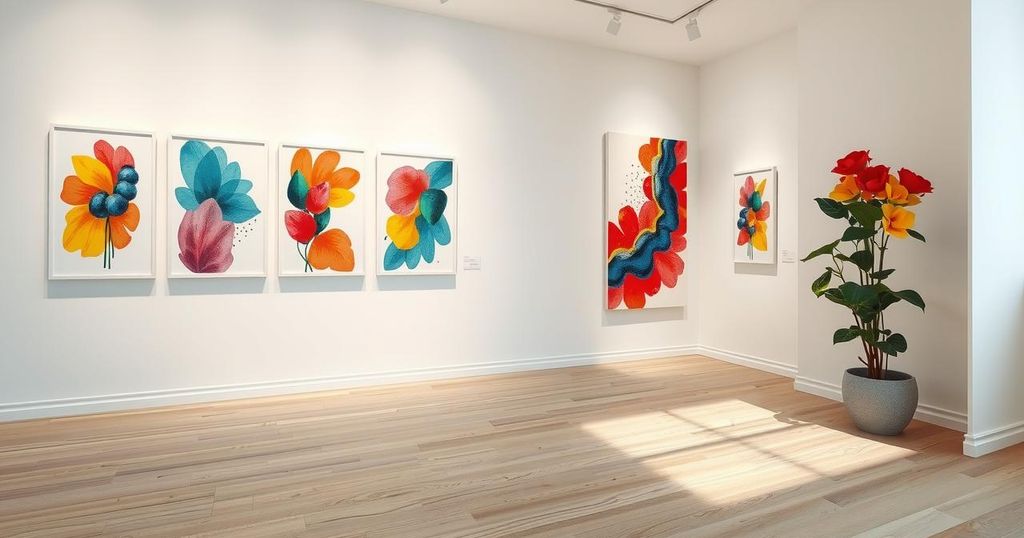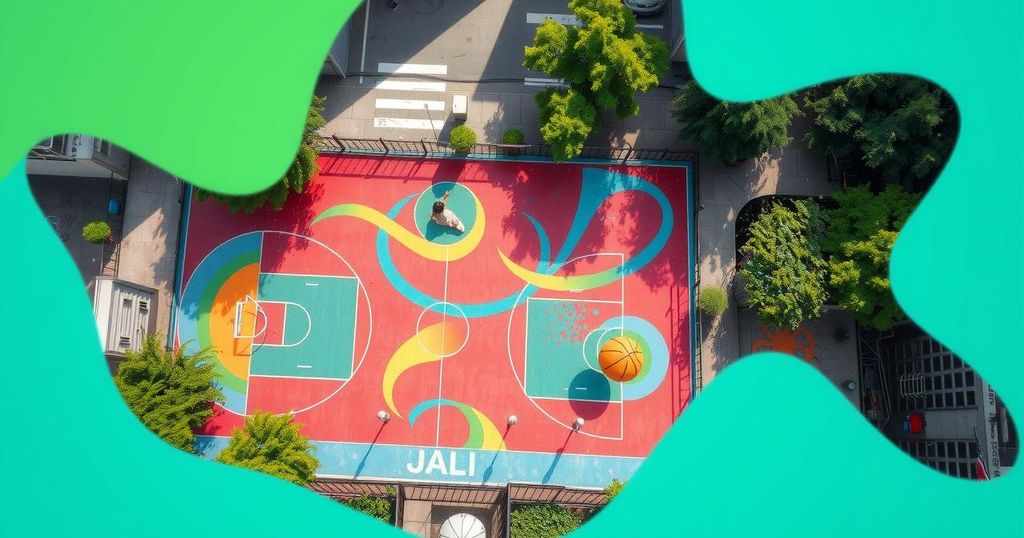A Symphony of Resilience: The Israel Philharmonic Orchestra Commemorates October 7 With Art and Music
On the first anniversary of October 7, the Israel Philharmonic Orchestra launched “Pictures at an Exhibition,” merging visual art with Mussorgsky’s music. Artists like Joel Mesler contributed works exploring profound themes of Jewish resilience. The exhibition invites audiences into a shared emotional experience, ultimately serving as a tribute to survival and the spirit of life. It remains open for public view, illustrating the healing power of art and music in the aftermath of tragedy.
In a heartfelt tribute one year following the harrowing events of October 7, the Israel Philharmonic Orchestra, along with the Nassima Landau Art Foundation, unveiled a poignant joint project named “Pictures at an Exhibition” at the Charles Bronfman Auditorium in Tel Aviv. This collaboration seamlessly melds classical music with visual art, aiming to heal the collective trauma experienced since that tragic day while evoking a rich emotional landscape for audiences. At the core of this unique initiative lies Mussorgsky’s famed suite, which pays homage to artist Viktor Hartmann. This time, nine Israeli and international artists creatively interpreted Mussorgsky’s music in their art, ranging from painting to photography and video. Displayed during the season-opening concerts, their works resonate deeply with themes of grief, loss, resilience, and hope, enriching the audience’s connection to that day’s events. Under the guidance of Lahav Shani and Steeve Nassima, notable artists including Michal Rovner, Gideon Rubin, and Joel Mesler each selected a composition from Mussorgsky to respond to artistically. Their pieces weave a narrative reflecting the emotional spectrum of a nation still reeling from tragedy, offering a breathtaking experience where music and art interweave to form a moving tribute. Among the highlights is Joel Mesler’s piece “L’Chaim,” which opens a dialogue on life, resilience, and the core essence of Jewish spirit. Mesler’s bold, text-based artworks often blend individual experiences with Jewish heritage, and this particular piece emphasizes the differing perceptions of the term “L’chaim” within diverse Jewish communities. He notes, “The response from an American Jewish audience when I use ‘L’chaim’ is so different from that of a secular Israeli.” Delving into the contrasts between Jewish life in Israel and the diaspora, Mesler’s work becomes a bridge, analyzing this shared history of struggle. “When I say ‘L’chaim,’ I’m not talking about a casual toast… it’s about choosing life over death, hope over despair,” he expresses profoundly. This reflection adds weight to his artwork, which symbolizes trauma, survival, and a renewed embrace of life, resonating with audiences intimately. Mesler articulates his painting as a spiritual statement of resilience, expressing that creating such deeply meaningful art can be emotionally heavy. Yet he sees it as a personal and artistic responsibility, stating, “When it comes to anything involving recovery or supporting the Jewish people, I’m all in.” His contribution transcends traditional artistry, intertwining his mission with the audience’s shared experience of healing. Recognizing the stark contrast in experiences between American and Israeli Jews in the face of increasing antisemitism, Mesler believes this shared struggle is crucial to understanding Jewish survival. “Without life, there is no light,” he emphasizes thoughtfully, capturing the essence of his artistic mission as the unveiling of “L’Chaim” resonates with all attendees. The exhibition stands open to the public, reflecting the healing power embedded in art and music, and the collective strength of a people determined to transform grief into resilience. Ultimately, the event fosters a communal journey through pain and hope, embedding itself in the hearts of those who dare to remember while choosing life.
The article discusses a cultural initiative spearheaded by the Israel Philharmonic Orchestra and the Nassima Landau Art Foundation a year after the catastrophic events of October 7. The project, blending visual art with classical music, conceptualizes Mussorgsky’s famed suite ‘Pictures at an Exhibition’. Artists explore themes of Jewish resilience and survival as they create visual representations stirred by the emotions evoked through the music. The event emphasizes the strong connections between art, memory, and healing in the Jewish experience following collective trauma.
The collaboration between the Israel Philharmonic Orchestra and the Nassima Landau Art Foundation effectively melds music and visual arts, creating a powerful tribute to resilience in the face of tragedy. Through unique artistic interpretations of Mussorgsky’s work, the artists dive into themes of grief, survival, and hope, offering audiences an immersive experience. Ultimately, this event serves as a reminder of the enduring strength of the Jewish spirit, transforming grief into a celebration of life.
Original Source: www.jpost.com




Post Comment